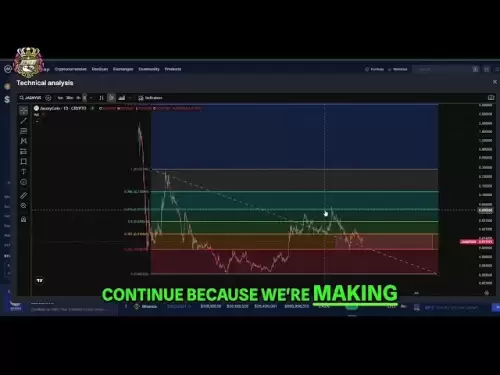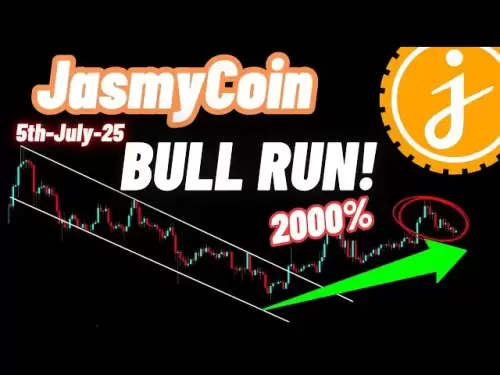-
 Bitcoin
Bitcoin $108,250.0992
0.11% -
 Ethereum
Ethereum $2,515.9404
0.03% -
 Tether USDt
Tether USDt $1.0003
0.00% -
 XRP
XRP $2.2166
-0.19% -
 BNB
BNB $656.5904
0.29% -
 Solana
Solana $147.4122
-0.58% -
 USDC
USDC $1.0000
-0.01% -
 TRON
TRON $0.2830
0.06% -
 Dogecoin
Dogecoin $0.1641
0.27% -
 Cardano
Cardano $0.5739
-0.19% -
 Hyperliquid
Hyperliquid $39.1463
-0.11% -
 Sui
Sui $2.8882
-0.02% -
 Bitcoin Cash
Bitcoin Cash $487.6428
0.31% -
 Chainlink
Chainlink $13.2097
0.07% -
 UNUS SED LEO
UNUS SED LEO $9.0308
0.10% -
 Avalanche
Avalanche $17.8608
0.13% -
 Stellar
Stellar $0.2379
-0.06% -
 Toncoin
Toncoin $2.7400
-0.39% -
 Shiba Inu
Shiba Inu $0.0...01144
-0.36% -
 Litecoin
Litecoin $87.5467
0.66% -
 Hedera
Hedera $0.1538
0.22% -
 Monero
Monero $315.5479
0.36% -
 Dai
Dai $1.0000
0.00% -
 Polkadot
Polkadot $3.3523
-0.71% -
 Ethena USDe
Ethena USDe $1.0003
0.01% -
 Bitget Token
Bitget Token $4.3960
-1.03% -
 Uniswap
Uniswap $7.2663
4.19% -
 Aave
Aave $272.8619
2.04% -
 Pepe
Pepe $0.0...09676
-0.18% -
 Pi
Pi $0.4586
-2.87%
How to view historical transaction records on OKX?
To view historical transactions on OKX, log in, go to 'Assets', select 'Transaction History', and use filters like date, type, and currency to find specific records.
Apr 13, 2025 at 11:43 pm
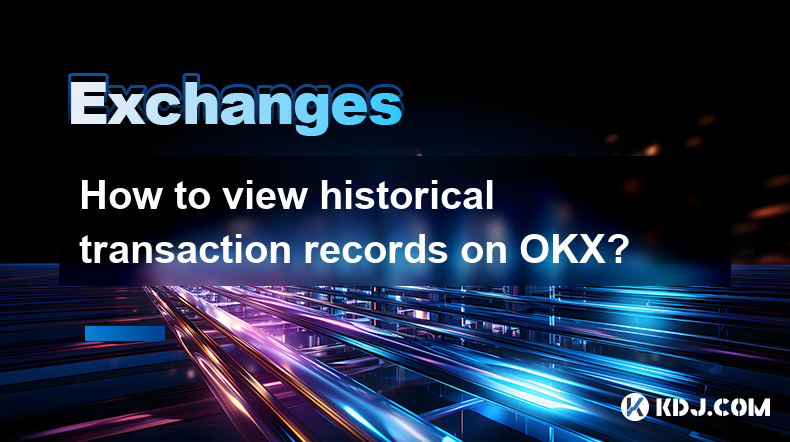
Viewing historical transaction records on OKX is an essential skill for any cryptocurrency user. Whether you're tracking your trading history, verifying transactions, or preparing for tax purposes, understanding how to access these records can be incredibly beneficial. In this guide, we'll walk you through the detailed steps to view your historical transaction records on OKX, ensuring you don't miss any important details.
Accessing Your OKX Account
Before you can view your historical transaction records, you need to log into your OKX account. Here’s how to do it:
- Open your preferred web browser and navigate to the OKX website.
- Enter your login credentials, which include your email address or phone number and your password.
- Complete any two-factor authentication (2FA) if you have it enabled for added security.
Once logged in, you’ll be directed to your OKX dashboard, where you can start accessing your transaction records.
Navigating to the Transaction History Page
To view your historical transaction records, you need to navigate to the appropriate section on OKX. Here are the steps to follow:
- From the OKX dashboard, locate and click on the ‘Assets’ tab, usually found at the top of the page.
- Within the ‘Assets’ menu, select ‘Transaction History’. This will take you to a page where you can view all your past transactions.
Filtering and Viewing Your Transactions
OKX provides robust filtering options to help you find specific transactions quickly. Here’s how to use these filters:
- On the Transaction History page, you’ll see a list of all your transactions. You can filter these by selecting specific criteria such as date range, transaction type (deposit, withdrawal, trade, etc.), and currency.
- To filter by date, click on the ‘Date’ dropdown and select the start and end dates you’re interested in.
- To filter by transaction type, use the ‘Type’ dropdown to choose the type of transaction you want to view.
- For currency-specific transactions, use the ‘Currency’ dropdown to select the cryptocurrency or fiat currency you’re looking for.
After applying the filters, the page will refresh to show only the transactions that meet your criteria.
Understanding the Transaction Details
Each transaction listed on the Transaction History page includes several important details. Here’s what you need to know:
- Transaction ID: A unique identifier for each transaction, which can be used to track the transaction on the blockchain.
- Date and Time: When the transaction occurred.
- Type: The type of transaction, such as deposit, withdrawal, or trade.
- Amount: The amount of cryptocurrency or fiat currency involved in the transaction.
- Fee: Any fees associated with the transaction.
- Status: The current status of the transaction, such as ‘Completed’, ‘Pending’, or ‘Failed’.
Understanding these details will help you keep a clear record of your activities on OKX.
Exporting Your Transaction History
If you need to keep a record of your transactions for tax purposes or personal records, OKX allows you to export your transaction history. Here’s how to do it:
- On the Transaction History page, look for an ‘Export’ button, typically located at the top right corner of the transaction list.
- Click on the ‘Export’ button and choose the format you want to export the data in, such as CSV or PDF.
- Select the date range for the transactions you want to export.
- Click ‘Confirm’ to initiate the export process. OKX will generate a file with your transaction history, which you can then download to your device.
Accessing Advanced Transaction Details
For users who need more detailed information about their transactions, OKX offers advanced transaction details. Here’s how to access them:
- Find the transaction you want more information on in the Transaction History list.
- Click on the transaction to open its detailed view.
- In the detailed view, you’ll find additional information such as the blockchain hash, confirmation status, and any notes you may have added to the transaction.
This level of detail can be crucial for troubleshooting issues or verifying the authenticity of transactions.
Frequently Asked Questions
Q: Can I view transactions from a specific wallet address on OKX?
A: Yes, you can filter transactions by wallet address on OKX. When you’re on the Transaction History page, use the ‘Address’ filter to enter the specific wallet address you’re interested in. This will show you all transactions related to that address.
Q: Is there a limit to how far back I can view my transaction history on OKX?
A: OKX retains transaction history for a significant period, typically several years. However, the exact duration can vary based on the type of transaction and regulatory requirements. You can always contact OKX support if you need to access older records.
Q: Can I view transaction records for closed positions on OKX?
A: Yes, OKX allows you to view transaction records for closed positions. Navigate to the ‘Trading’ section, and then select ‘Order History’. Here, you can filter by ‘Closed’ positions to see the relevant transactions.
Q: How can I ensure the security of my transaction history on OKX?
A: To ensure the security of your transaction history, always use strong, unique passwords and enable two-factor authentication (2FA) on your OKX account. Additionally, regularly review your transaction history for any unauthorized transactions and report them to OKX support immediately.
Disclaimer:info@kdj.com
The information provided is not trading advice. kdj.com does not assume any responsibility for any investments made based on the information provided in this article. Cryptocurrencies are highly volatile and it is highly recommended that you invest with caution after thorough research!
If you believe that the content used on this website infringes your copyright, please contact us immediately (info@kdj.com) and we will delete it promptly.
- BNB, Nano Labs, and Binance: A $160 Million Crypto Play
- 2025-07-06 12:30:13
- Bitcoin, Taxing, and Fund Managers: Navigating the Crypto Maze in NYC
- 2025-07-06 12:50:14
- Debt Ceiling, Trump, and Bitcoin's Allure: A New York Minute on Fiscal Policy
- 2025-07-06 12:30:13
- Bitcoin, Ethereum, and Crypto Gains: What's Hot in the NYC Crypto Scene?
- 2025-07-06 13:10:15
- Zerion: Real-Time Portfolio Tracking Revolutionized
- 2025-07-06 13:10:15
- Bitcoin Transfer, Market Dip, and Speculation: Decoding the Crypto Whale's Moves
- 2025-07-06 12:35:13
Related knowledge
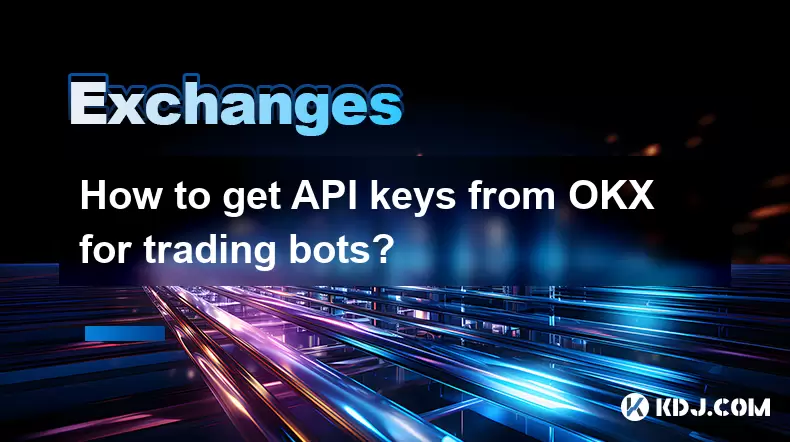
How to get API keys from OKX for trading bots?
Jul 03,2025 at 07:07am
Understanding API Keys on OKXTo interact with the OKX exchange programmatically, especially for building or running trading bots, you need to obtain an API key. An API (Application Programming Interface) key acts as a secure token that allows your bot to communicate with the exchange's servers. On OKX, these keys come with customizable permissions such ...
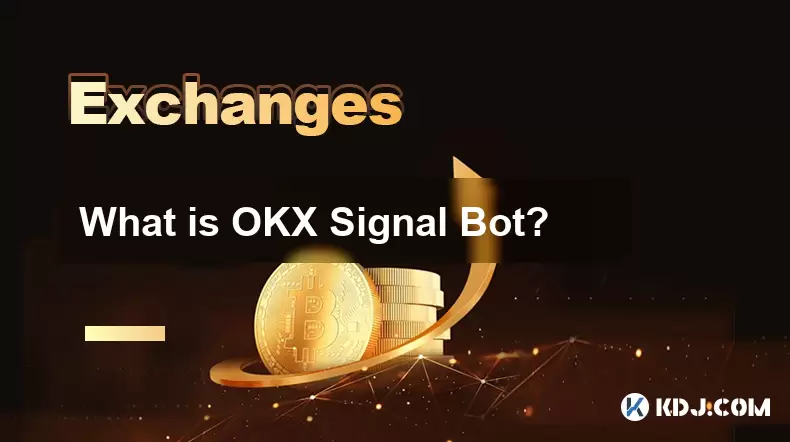
What is OKX Signal Bot?
Jul 02,2025 at 11:01pm
Understanding the Basics of OKX Signal BotThe OKX Signal Bot is a feature within the OKX ecosystem that provides users with automated trading signals and execution capabilities. Designed for both novice and experienced traders, this bot helps identify potential trading opportunities by analyzing market trends, technical indicators, and historical data. ...
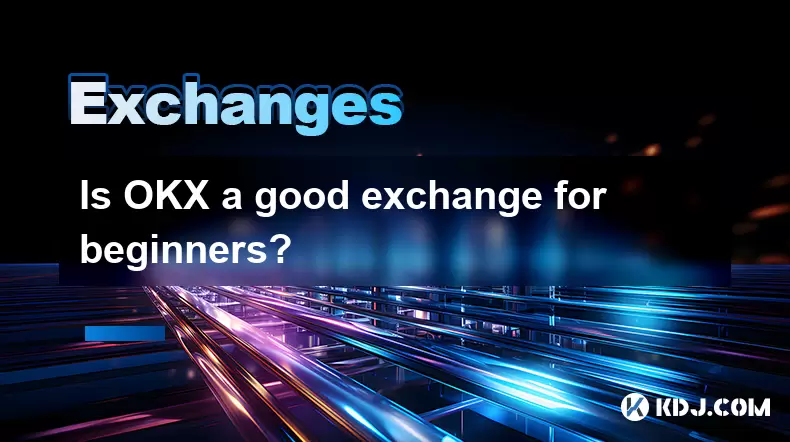
Is OKX a good exchange for beginners?
Jul 03,2025 at 05:00pm
What Is OKX and Why Is It Popular?OKX is one of the leading cryptocurrency exchanges globally, known for its robust trading infrastructure and a wide variety of digital assets available for trading. It supports over 300 cryptocurrencies, including major ones like Bitcoin (BTC), Ethereum (ETH), and Solana (SOL). The platform has gained popularity not onl...
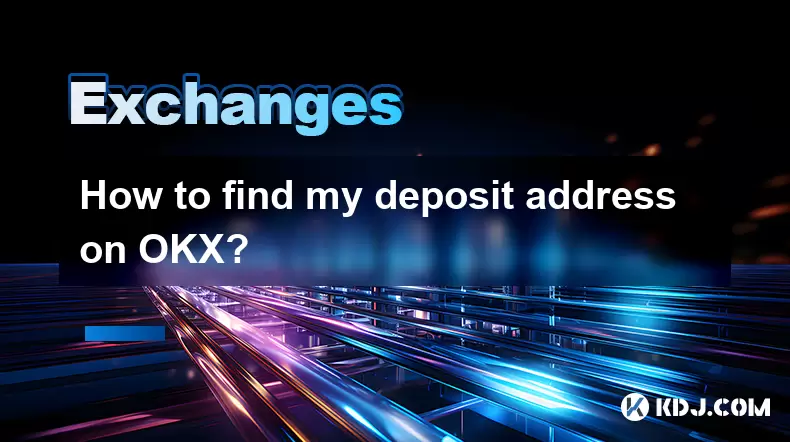
How to find my deposit address on OKX?
Jul 06,2025 at 02:28am
What is a Deposit Address on OKX?A deposit address on OKX is a unique alphanumeric identifier that allows users to receive cryptocurrencies into their OKX wallet. Each cryptocurrency has its own distinct deposit address, and using the correct one is crucial to ensure funds are received properly. If you're looking to transfer digital assets from another ...
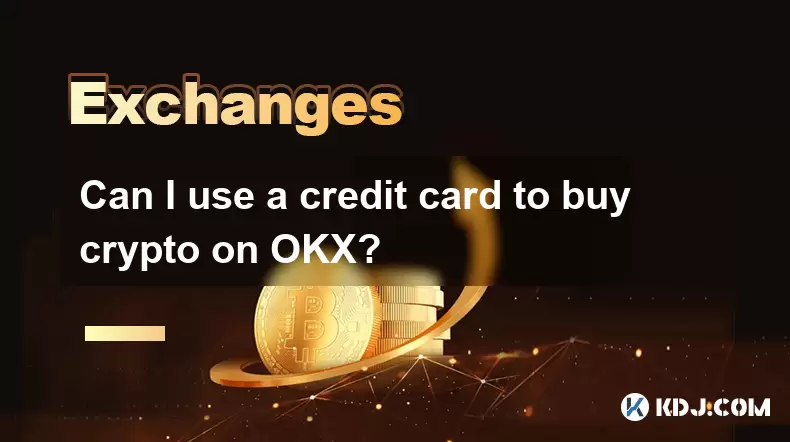
Can I use a credit card to buy crypto on OKX?
Jul 04,2025 at 04:28am
Understanding OKX and Credit Card PaymentsOKX is one of the leading cryptocurrency exchanges globally, offering a wide range of services including spot trading, derivatives, staking, and more. Users often wonder whether they can use a credit card to buy crypto on OKX, especially if they are new to the platform or looking for quick ways to enter the mark...
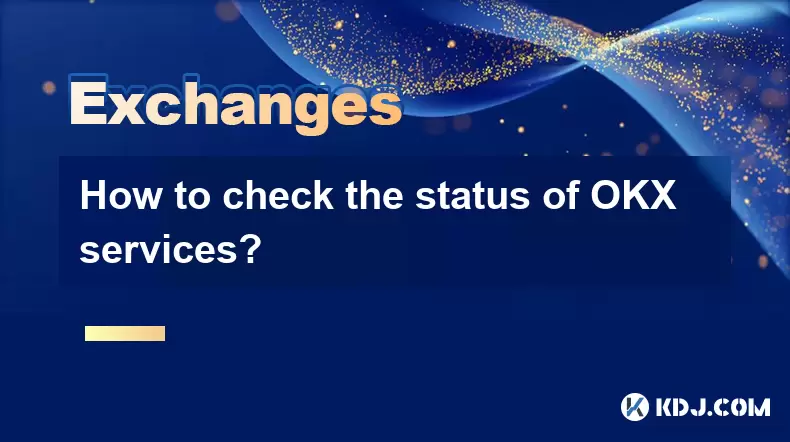
How to check the status of OKX services?
Jul 02,2025 at 11:14pm
What is OKX, and Why Checking Service Status Matters?OKX is one of the world’s leading cryptocurrency exchanges, offering services such as spot trading, futures trading, staking, and more. With millions of users relying on its platform for daily transactions, it's crucial to know how to check the status of OKX services. Downtime or maintenance can affec...

How to get API keys from OKX for trading bots?
Jul 03,2025 at 07:07am
Understanding API Keys on OKXTo interact with the OKX exchange programmatically, especially for building or running trading bots, you need to obtain an API key. An API (Application Programming Interface) key acts as a secure token that allows your bot to communicate with the exchange's servers. On OKX, these keys come with customizable permissions such ...

What is OKX Signal Bot?
Jul 02,2025 at 11:01pm
Understanding the Basics of OKX Signal BotThe OKX Signal Bot is a feature within the OKX ecosystem that provides users with automated trading signals and execution capabilities. Designed for both novice and experienced traders, this bot helps identify potential trading opportunities by analyzing market trends, technical indicators, and historical data. ...

Is OKX a good exchange for beginners?
Jul 03,2025 at 05:00pm
What Is OKX and Why Is It Popular?OKX is one of the leading cryptocurrency exchanges globally, known for its robust trading infrastructure and a wide variety of digital assets available for trading. It supports over 300 cryptocurrencies, including major ones like Bitcoin (BTC), Ethereum (ETH), and Solana (SOL). The platform has gained popularity not onl...

How to find my deposit address on OKX?
Jul 06,2025 at 02:28am
What is a Deposit Address on OKX?A deposit address on OKX is a unique alphanumeric identifier that allows users to receive cryptocurrencies into their OKX wallet. Each cryptocurrency has its own distinct deposit address, and using the correct one is crucial to ensure funds are received properly. If you're looking to transfer digital assets from another ...

Can I use a credit card to buy crypto on OKX?
Jul 04,2025 at 04:28am
Understanding OKX and Credit Card PaymentsOKX is one of the leading cryptocurrency exchanges globally, offering a wide range of services including spot trading, derivatives, staking, and more. Users often wonder whether they can use a credit card to buy crypto on OKX, especially if they are new to the platform or looking for quick ways to enter the mark...

How to check the status of OKX services?
Jul 02,2025 at 11:14pm
What is OKX, and Why Checking Service Status Matters?OKX is one of the world’s leading cryptocurrency exchanges, offering services such as spot trading, futures trading, staking, and more. With millions of users relying on its platform for daily transactions, it's crucial to know how to check the status of OKX services. Downtime or maintenance can affec...
See all articles





















